30 Air Travel Perks We Miss
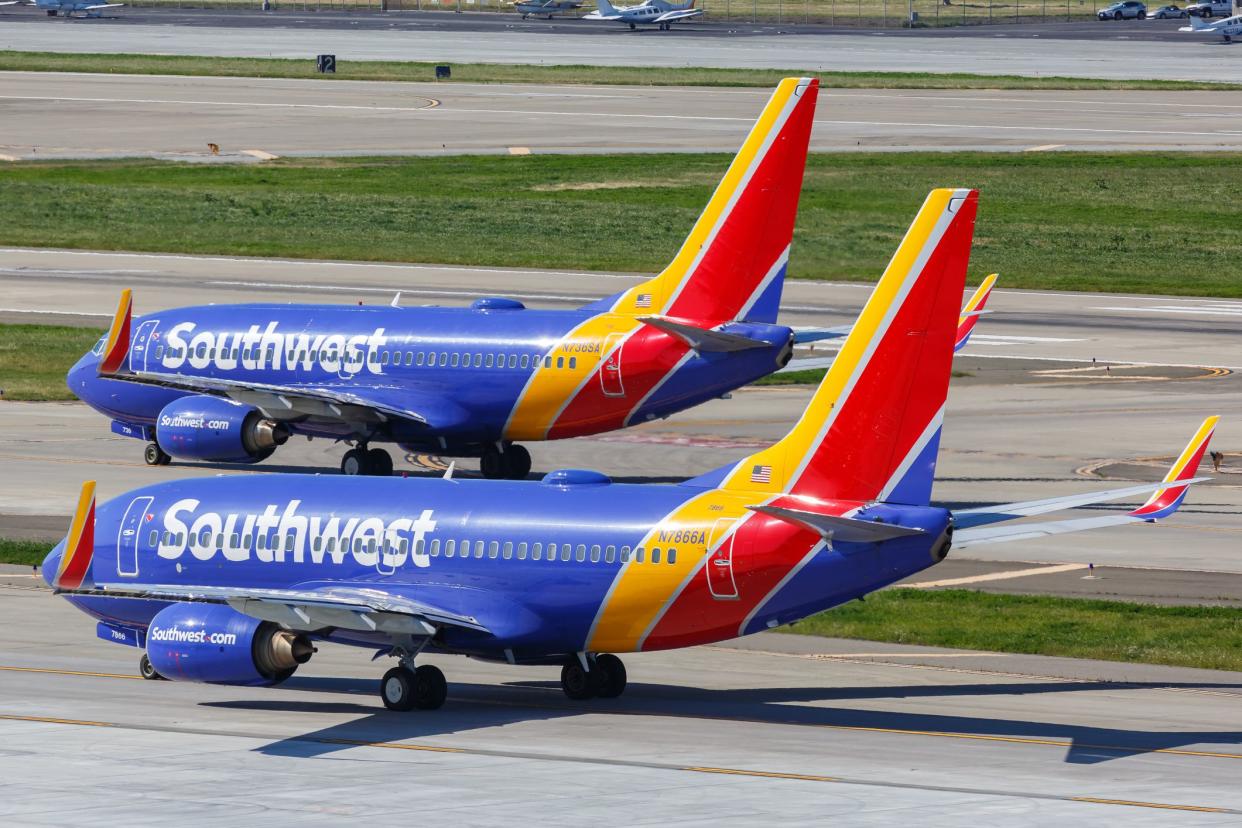
Air travel wasn't always like taking a bus. It was a luxury, and the cost reflected that — according to a study by Compass Lexecon, a flight from Los Angeles to Boston in 1941 was around $4,539 a person in today’s money, and would have taken 15 hours and 15 minutes with a dozen stops. By 2015, the average nonstop flight cost $481 and took six hours. We get it, though: Even though you're paying less, it feels like you're getting (a lot) less. Southwest recently announced that it's pushing back against that narrative by spending $2 billion on perks including bigger overhead bins, faster internet, outlets in every seat, better in-flight entertainment, and more booze options. Still, it will be a far cry from the plush air-travel perks of yesteryear. Here are some of the perks you now pay for — or just don't get at all.
Related: What Flight Attendants Want You To Know About Flying Now
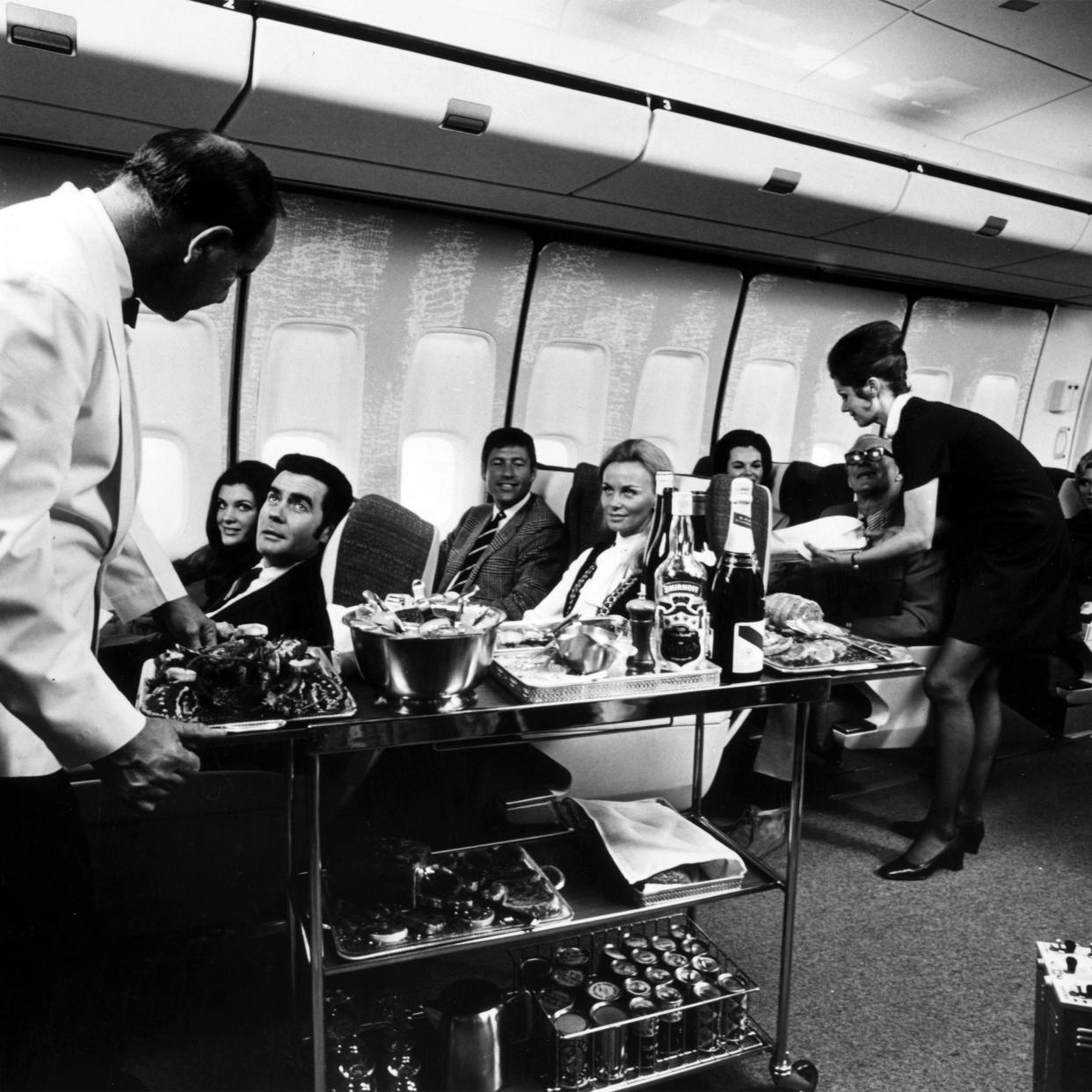
In the Golden Days of travel, booze (at times including Champagne in coach) was the in-flight entertainment, and passengers might come off planes completely smashed. Today, some airlines won't even serve booze at all, though Southwest Airlines brought it back after the pandemic prompted a suspension of sales in March 2020, and bad passenger behavior subsequently extended the ban. As part of a $2 billion upgrade plan to be implemented over the next five years, Southwest's booze options are set to include bloody mary mix, ready-to-drink cocktails, hard seltzer, and rose wine. (No, it still won't be free.)
Related: Unbelievable Airline Incidents Through the Years
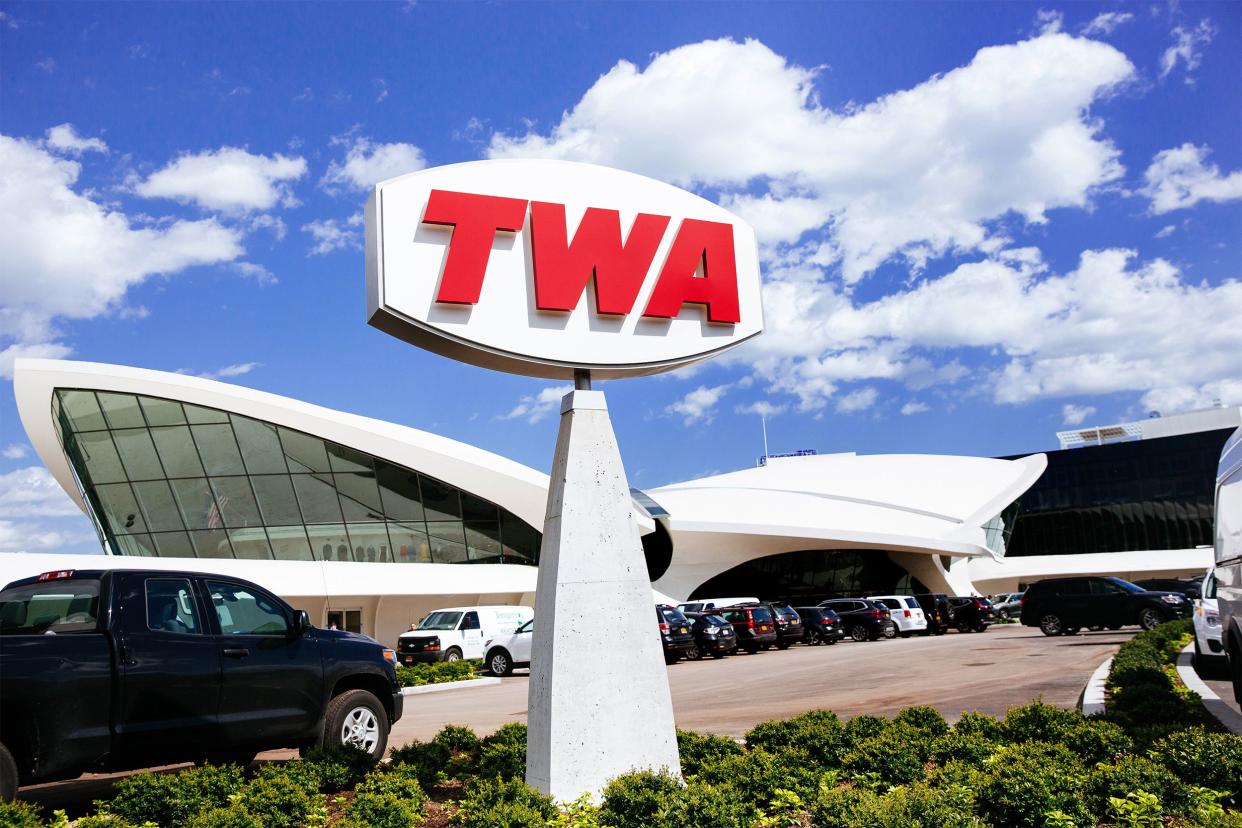
We don't just mean kiosks and chain restaurants: We mean gorgeous design and buildings worth converting into hotels. Timeless, unbranded facilities for domestic travel are increasingly rare as cost wins out over comfort.
Related: 16 of the Most Passenger-Friendly Airports in the World

Keep in mind that passengers didn't even need to be screened until 1973. You could arrive 30 minutes before a flight, check in curbside with your bags and just stroll right onto your plane. Even in the '80s, fears of hijackings didn't slow things down all that much, as there were no security checkpoints and only one place to check in and drop baggage.
Related: 15 Expert Secrets to Stress-Free Flying
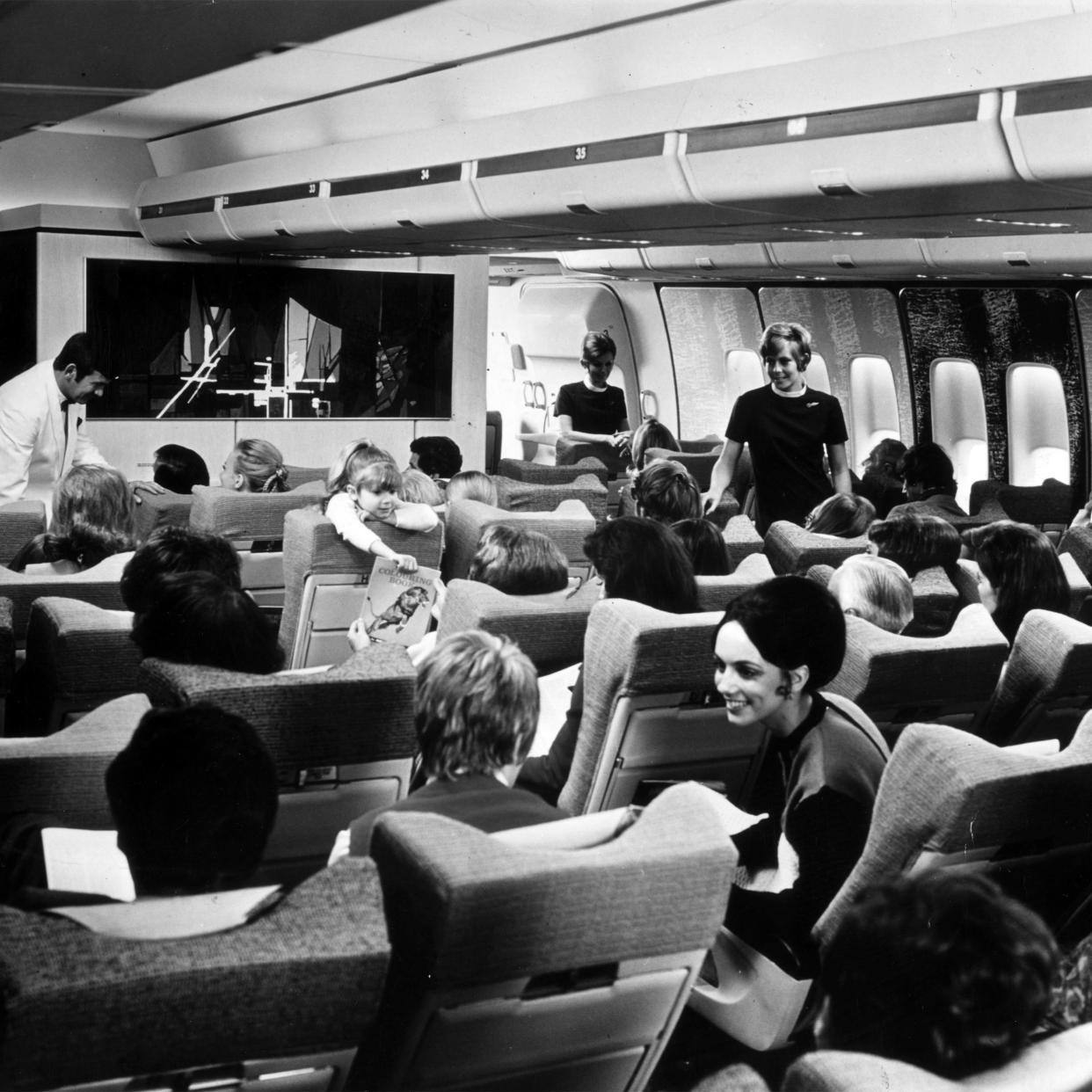
There were spiral staircases between two floors. There were widescreen movies in the cabins. There were bars and cocktail lounges. Fuel prices and advancing technology took the 747 out of duty, but during the 1970s and '80s, it was basically a slower, domestic, more down-home Concorde.
For more great travel guides and vacation tips, please sign up for our free newsletters.
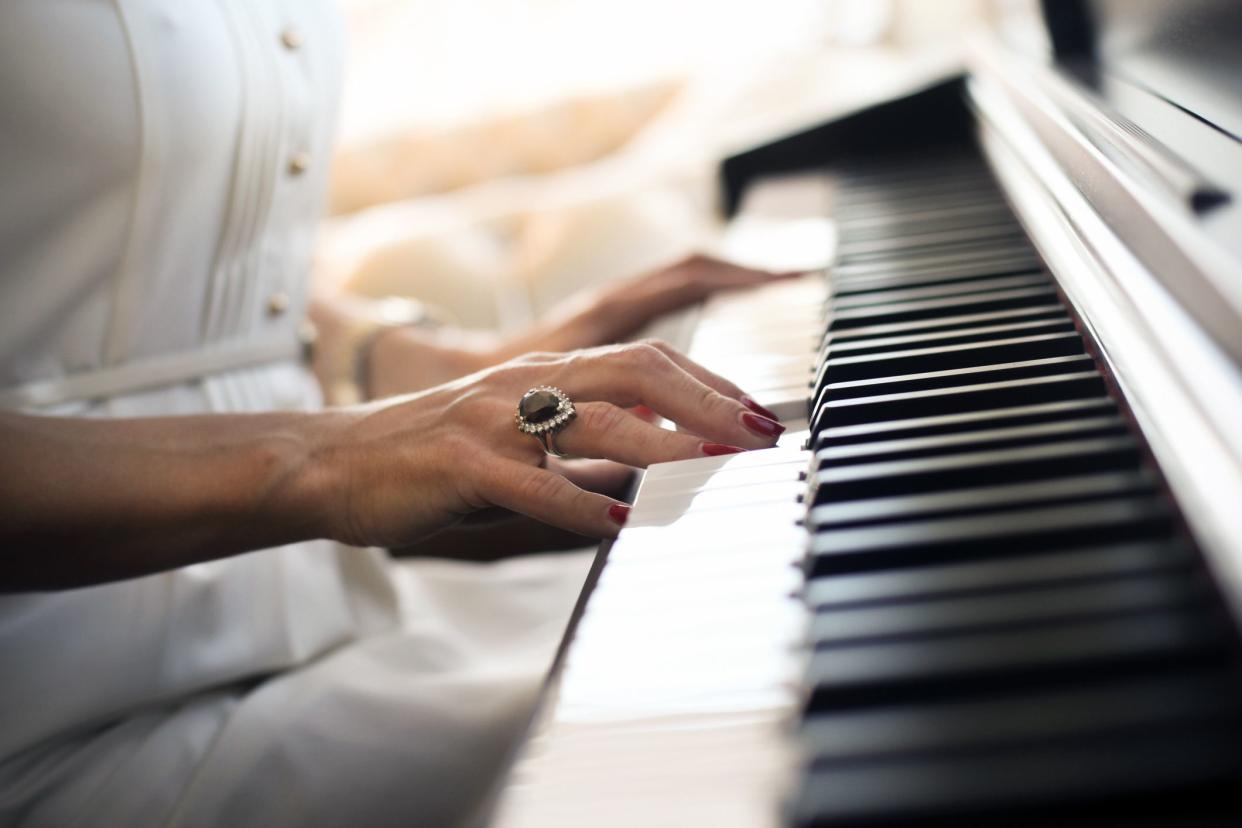
From 1970 to about 1974, American Airlines pulled 60 seats out of its 747s to create room for a lounge with a Wurlitzer electric piano and bar with free cocktails. Other airlines began installing lounges of their own.
Related: 25 Most Luxurious First-Class Amenities
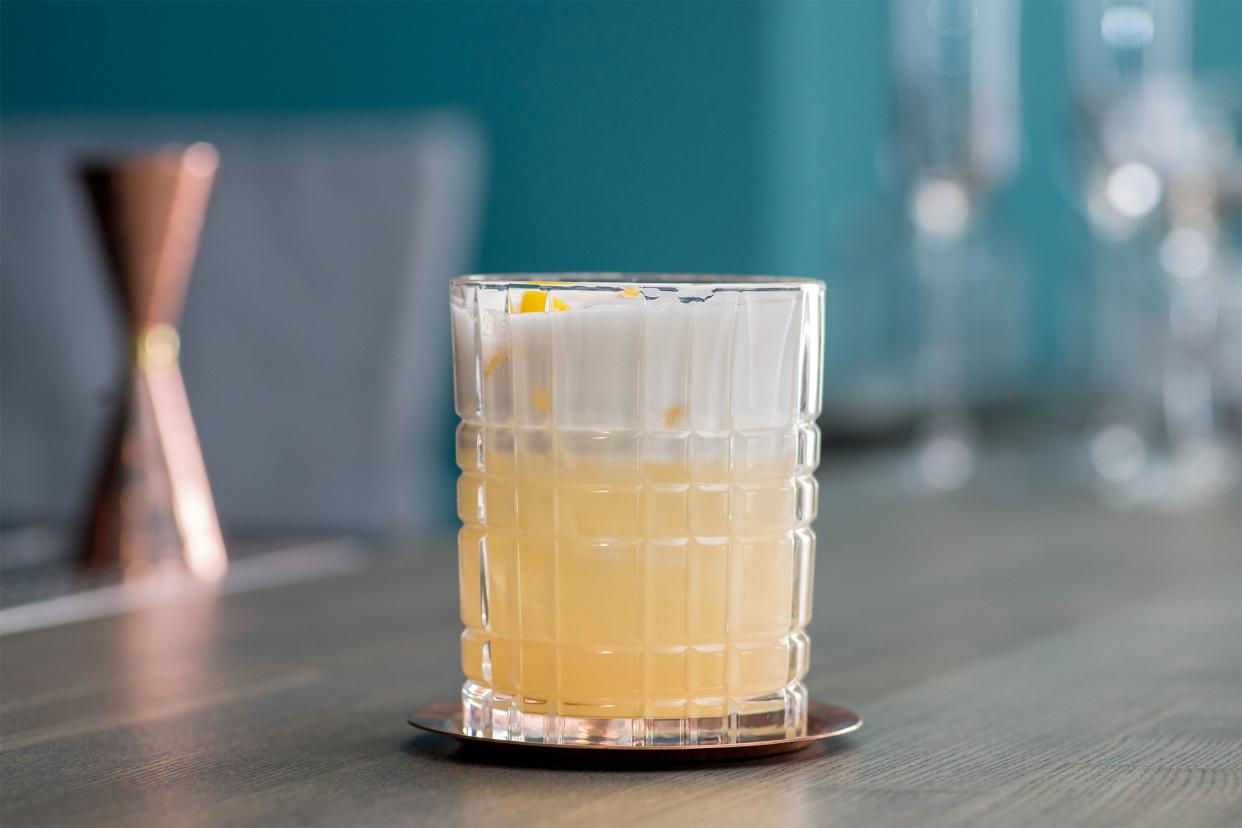
No, that Old Fashioned you made with a sugar packet and a mini bottle of whiskey doesn't count. As recently as the '80s and '90s, bloody marys came with celery sticks, maraschino cherries made their way into the ice cubes, and you could actually squeeze the wedges. Now? You might get a cocktail on an international flight, but it'a rare to find a domestic flight that will actually fix you a drink in coach or economy.
Related: 20 Cold Weather Cocktails
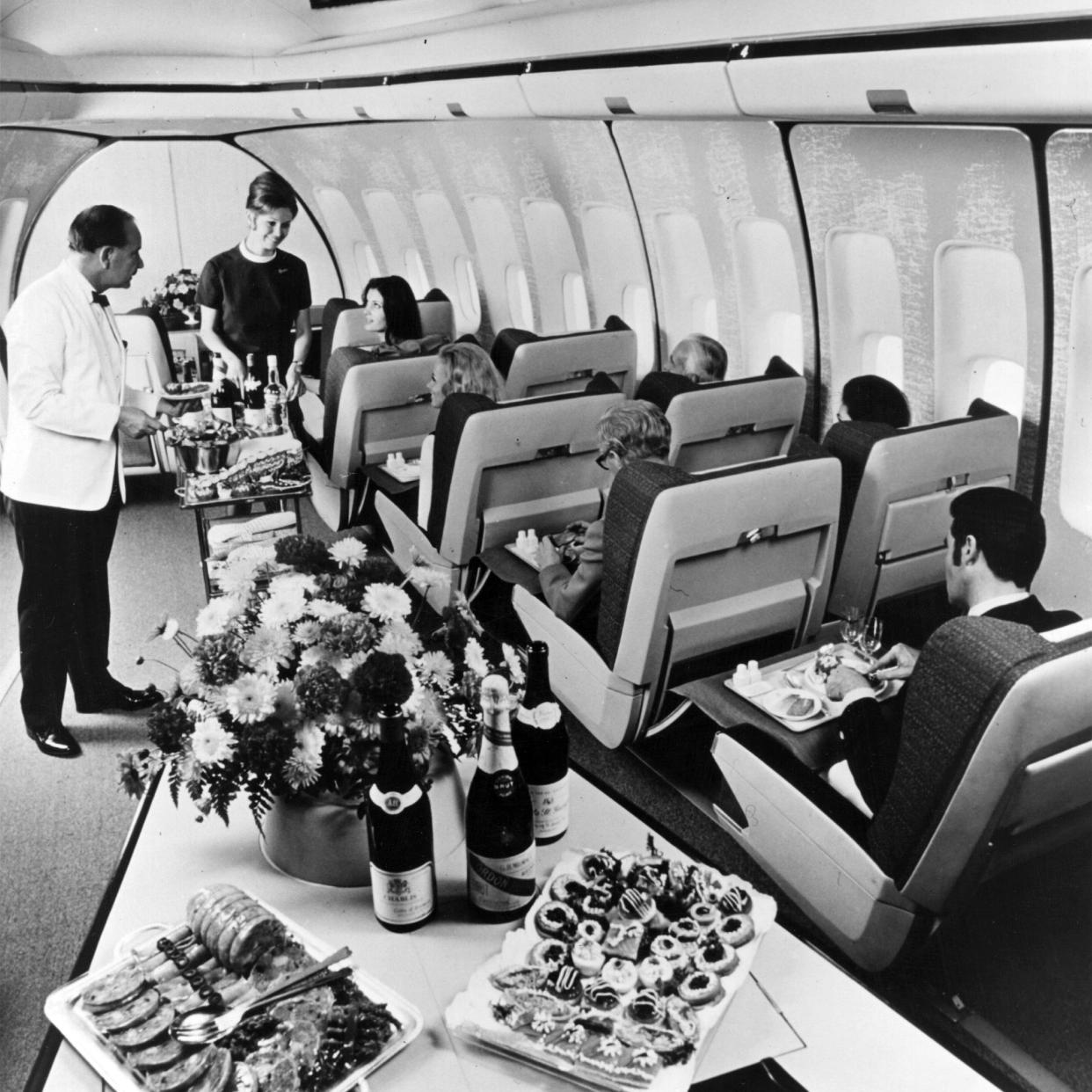
When airlines were catering to a fairly new market and wanted to attract passengers with something other than price, they'd try to one-up each other with extravagant meal offerings. Multiple-course meals weren't out of the question and, if you were willing to chance it, lobster was on the menu. Airlines such as Pan Am would carve you roast beef or ham in the aisle regularly on certain flights.
Related: U.S. Airports With Surprisingly Good Food
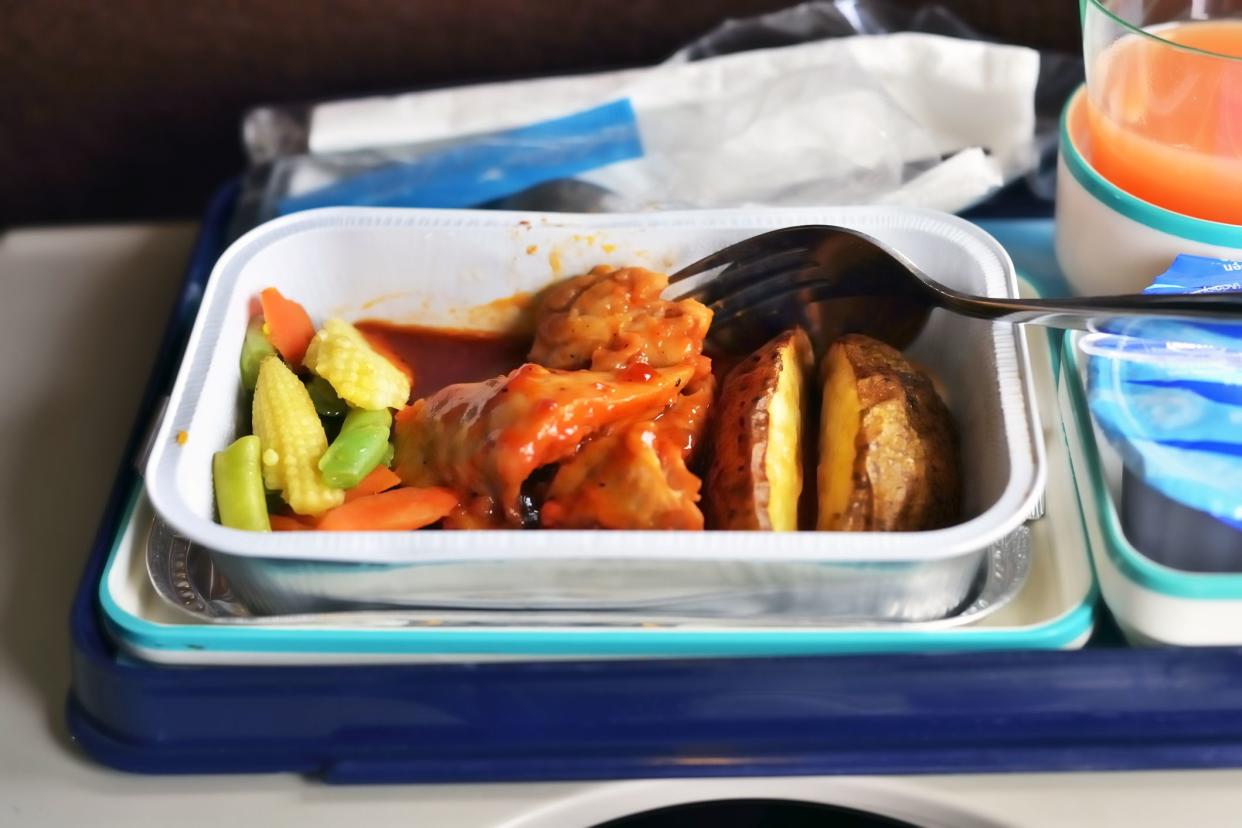
At one point, you bought your ticket and picked "vegetarian" or "meat." But when Continental merged with United in 2010, it stopped serving free in-flight meals — and it had been the lone holdout for domestic flights. Now an in-flight meal is basically a box lunch bought with a credit card.
Related: U.S. Airlines Fare Poorly in World Rankings
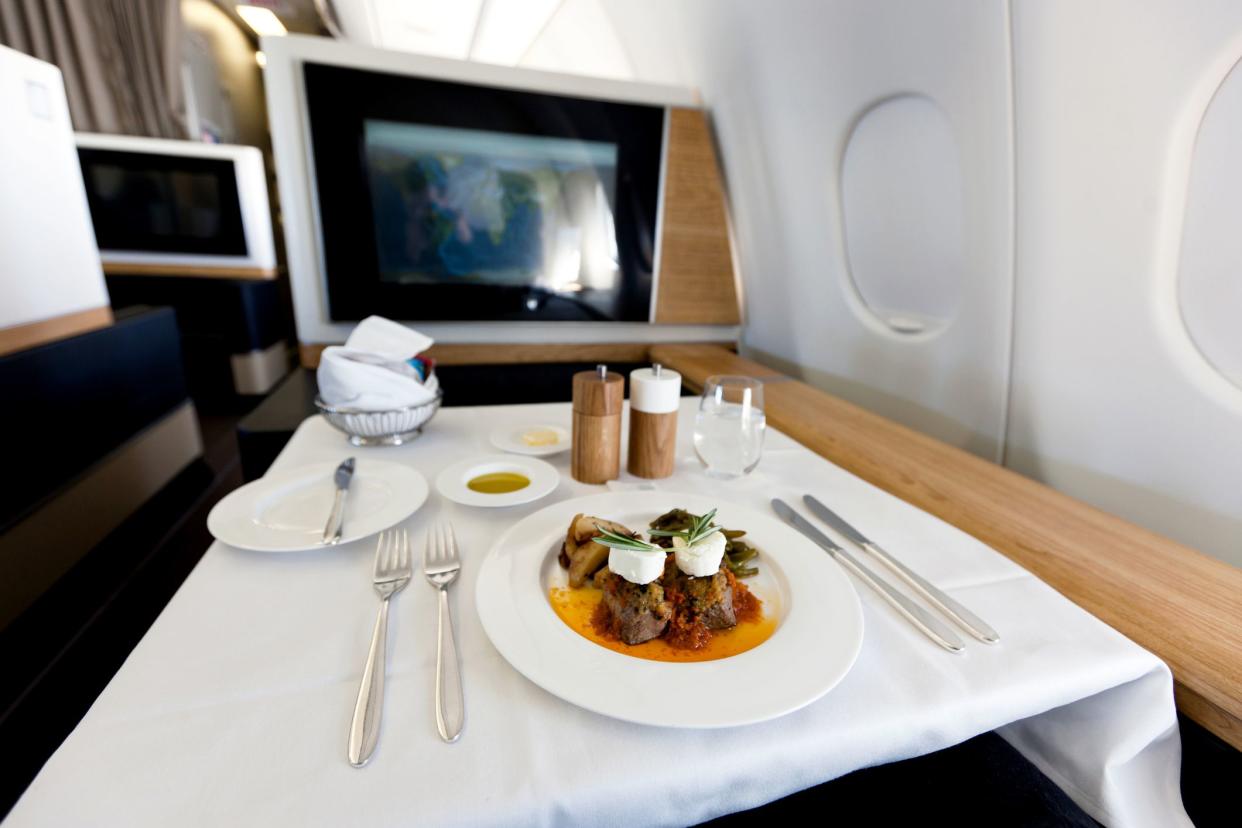
You may still get these in premium cabins — and they're lovely — but outright thievery made cutlery and glasses disappear on some airlines. For economy, coach, and even business-class passengers, the best place to find actual silverware and glassware from major airlines is on eBay.
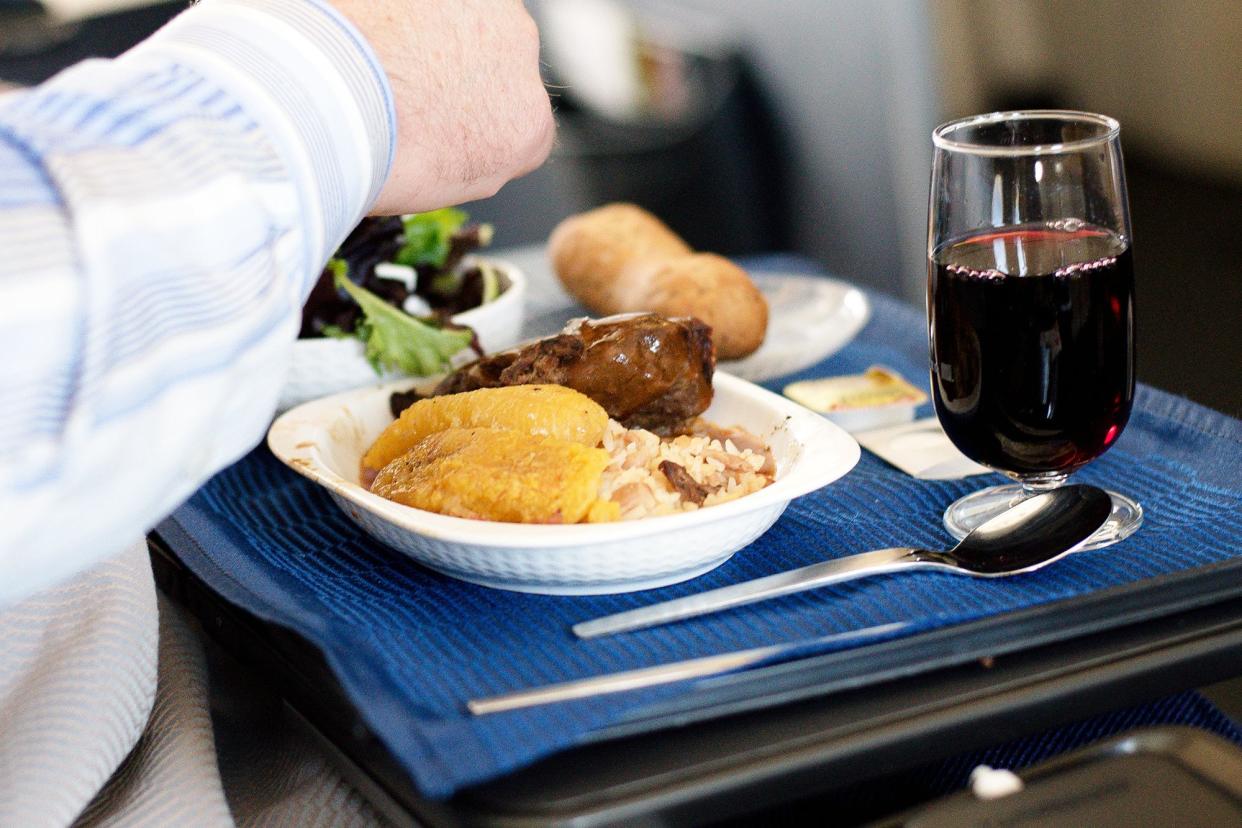
Even when airlines phased out the free booze, most still served a free glass of wine with each meal in a real wine glass. Travel site Oyster says this is one reason why the '80s were the real Golden Age of domestic flight.
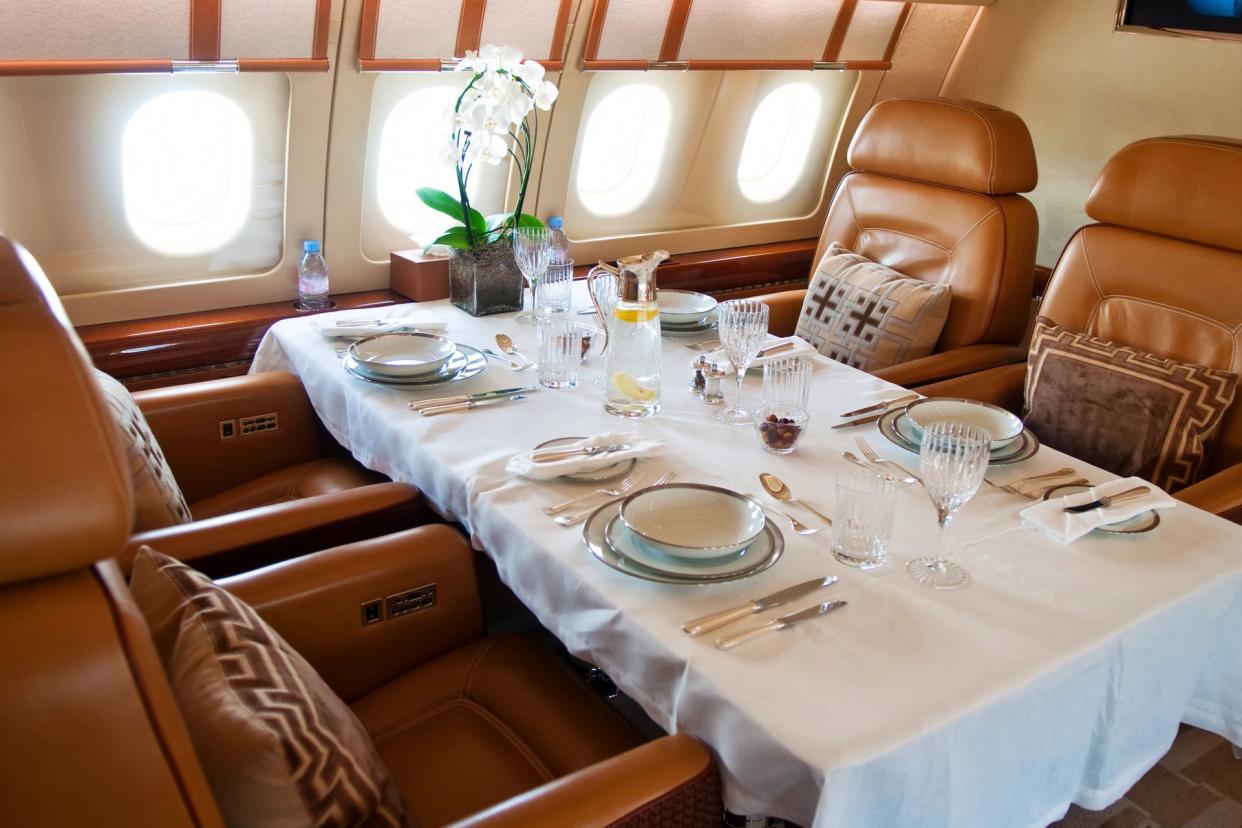
Pan Am’s supposedly “vibration-free” 707 Clipper put fresh flowers arrangements on every first-class tray table during dinner until the late 1970s, assuring that they wouldn't spill during turbulence.
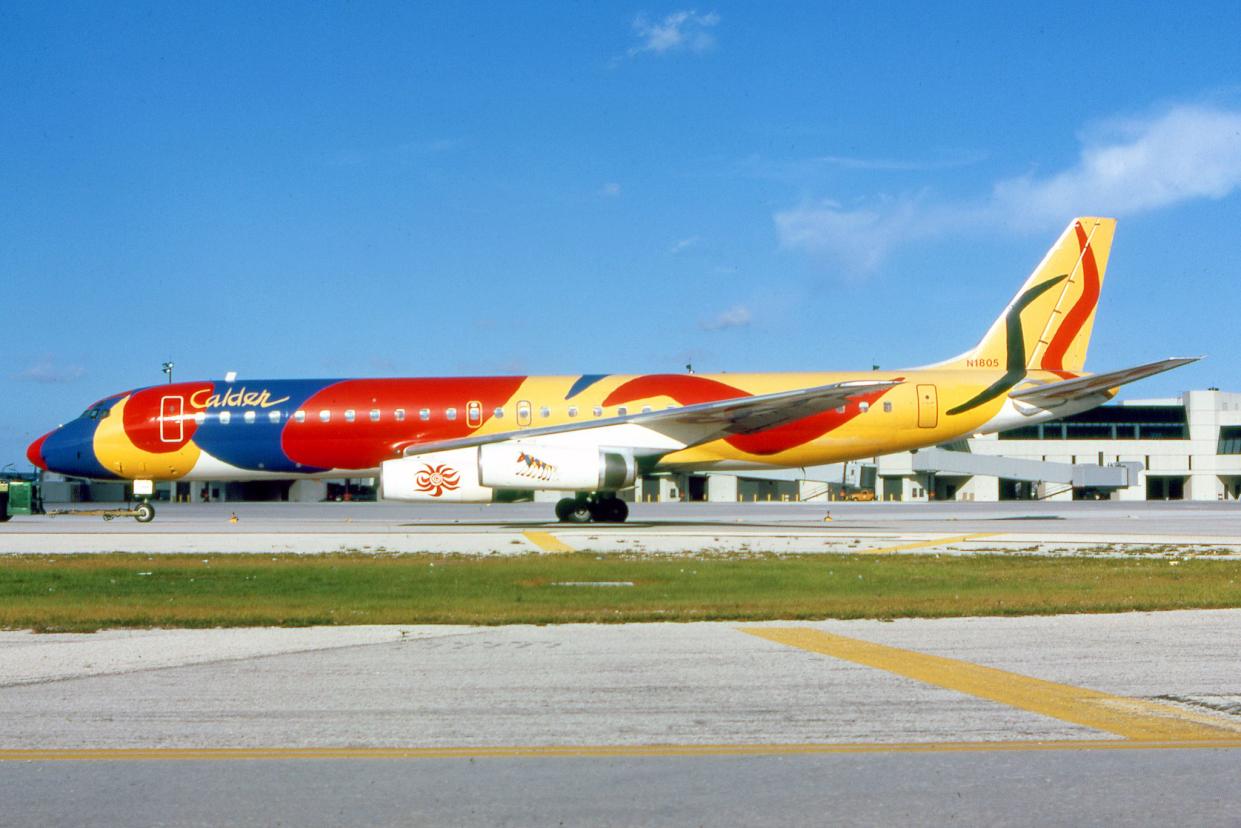
Now-defunct Braniff International hired architect Alexander Girard to spruce up its planes in the 1960s and '70s. The “End of the Plain Plane” used a palette of 15 bright colors and 57 variations of Herman Miller fabrics that carried over to gate lounges, ticket offices, and the corporate headquarters. When the company expanded into Latin America, art from Brazil, Mexico, and Peru were added inside aircraft, and it made another splurge in the 1970s hiring artist Alexander Calder to paint patterns on each plane. Air France commissioned cabin artwork, too.
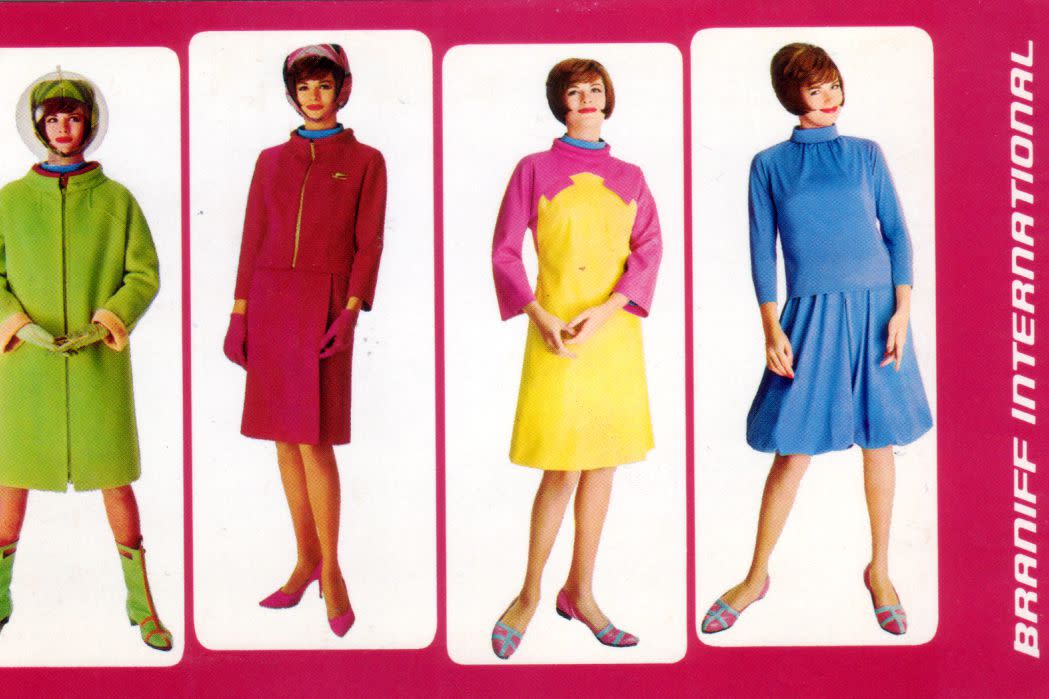
Braniff hired designer Emilio Pucci in 1965 to create a quick-change flight attendant uniform — one outfit to greet passengers, another to serve meals, then culottes for the rest of the flight. Ads for the “air strip” probably wouldn’t have passed muster even five years later.
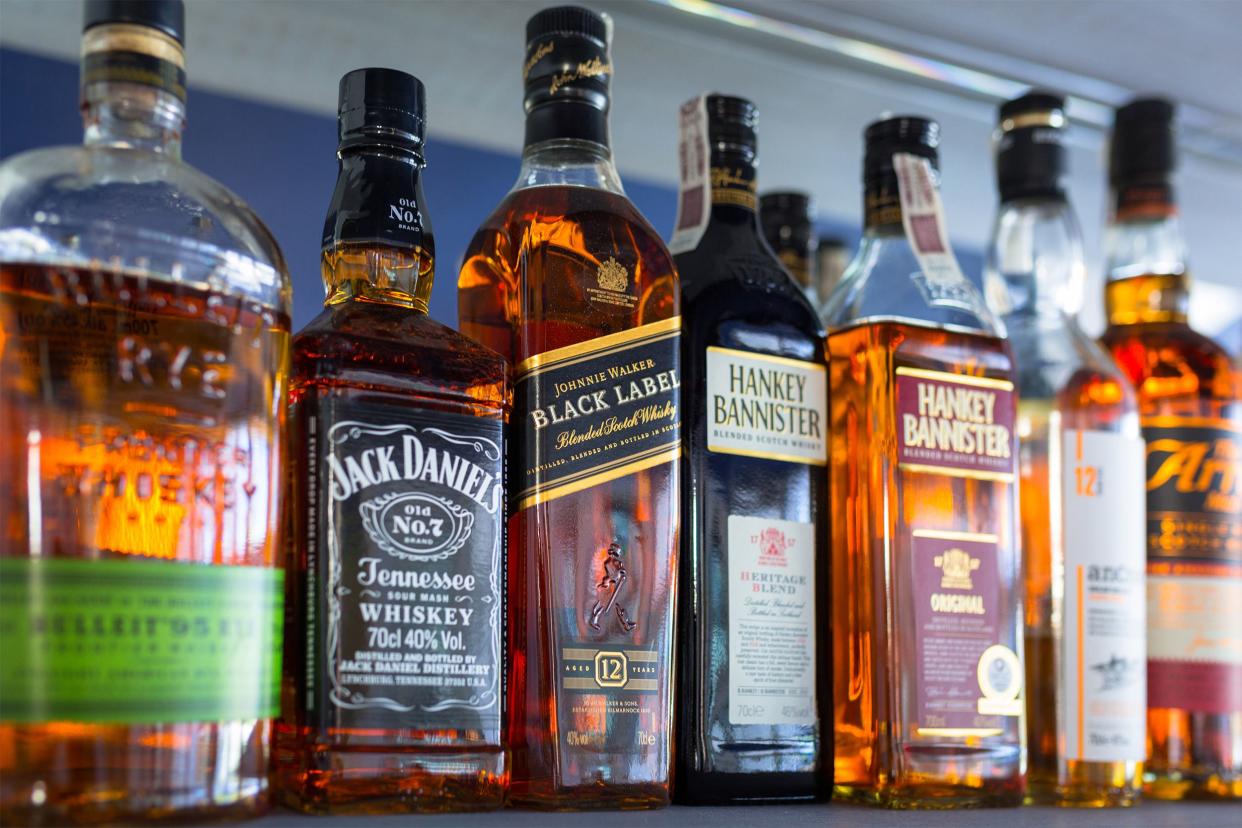
When Braniff and Texas International offered flights from Dallas to Houston for just $13 in 1970 (about $87, adjusted for inflation), Southwest charged $26 for tickets but threw in a full-size bottle of premium alcohol that a passenger could take home. This caught the eye of execs traveling on company expense accounts, who snatched up those fares to snag the free bottles.
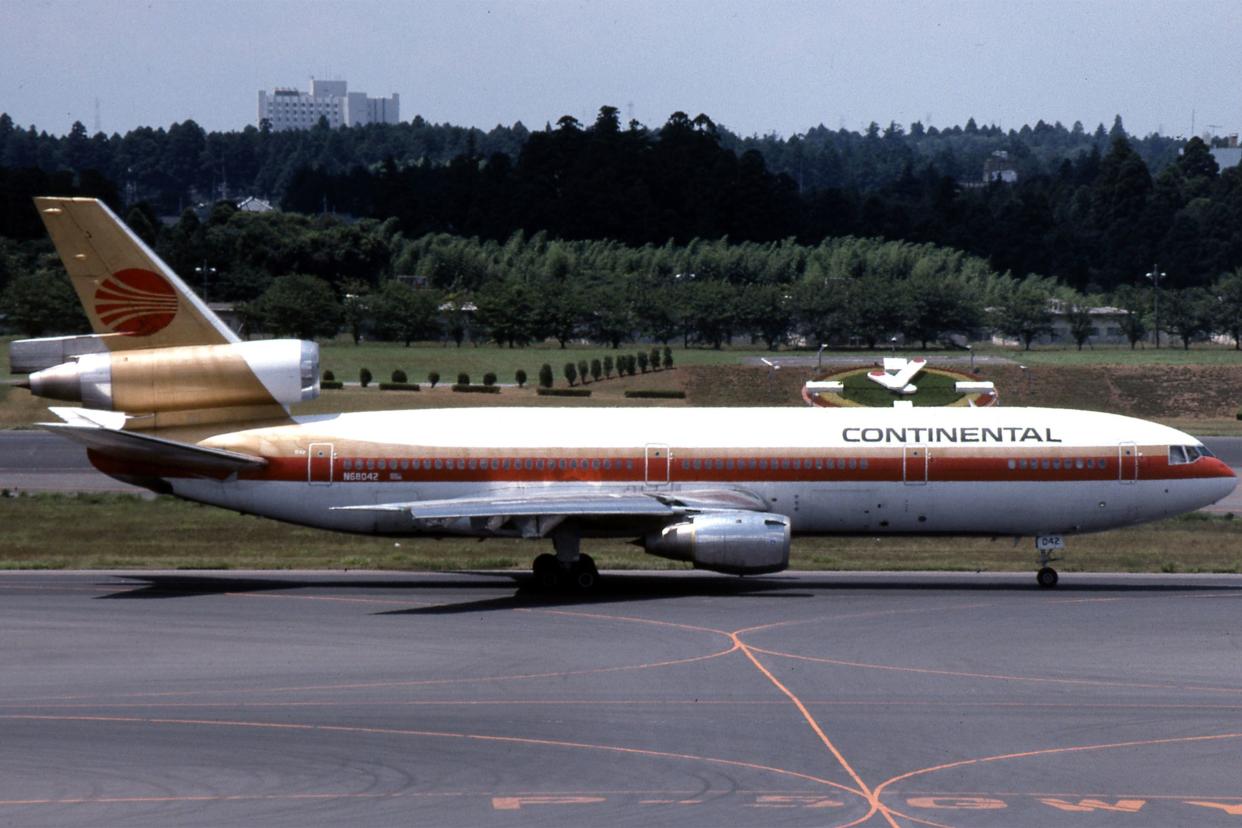
In the early 1980s, Continental Airlines outfitted some DC-10s as “pubs” with walk-up wet bars, circular tables with swivel chairs, and two-player “Pong” video games — cutting-edge technology at the time.
Related: Incredibly Fun Toys and Games for Adults
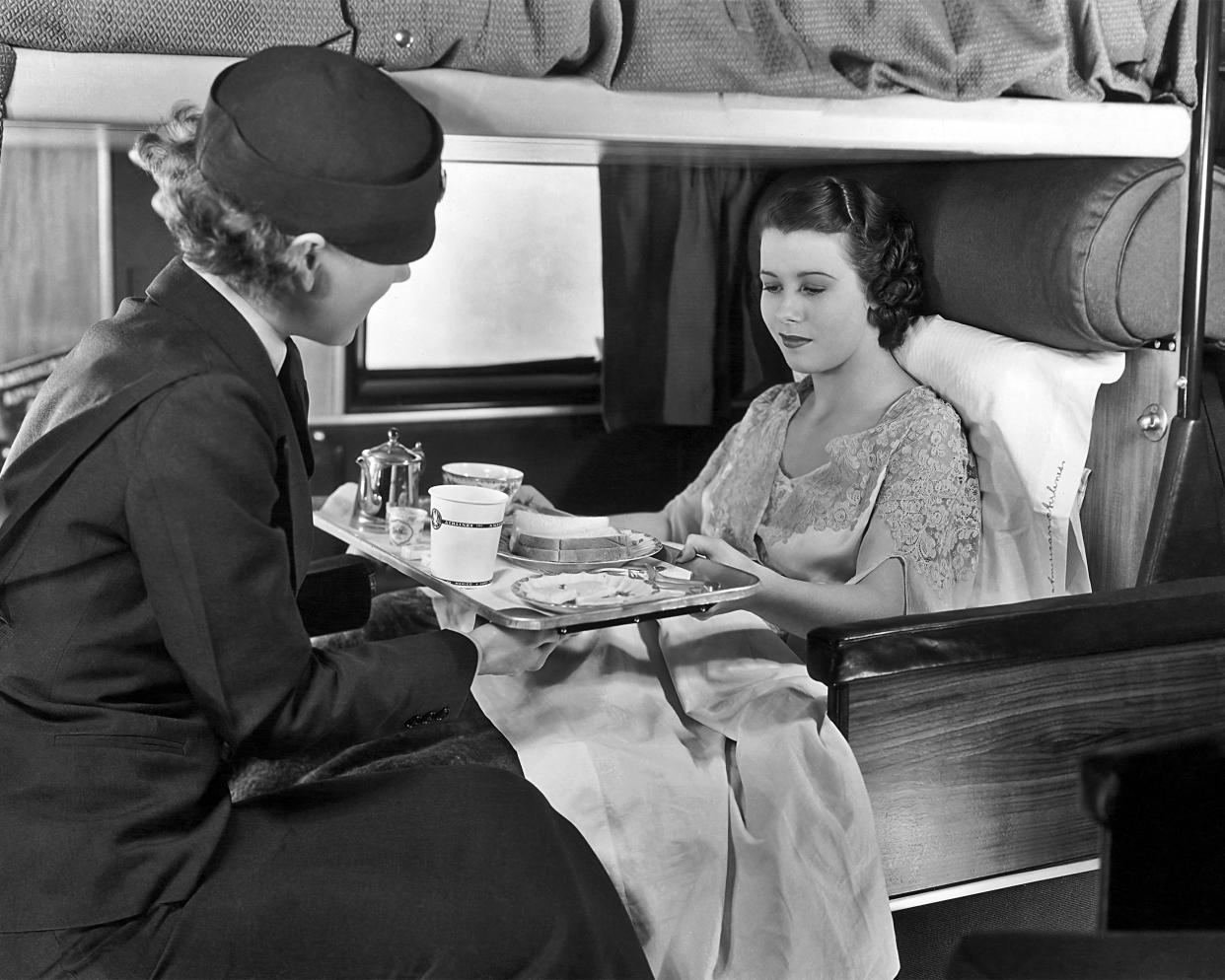
Sleeping pods are back for travelers who pay for the perk; in the late 1940s, the Boeing Stratocruiser’s key feature was that every seat in the main cabin, even in economy, could be adjusted to form enough sleeping berths for every passenger. Lockheed Constellations and Douglas DC-6s had beds, too.
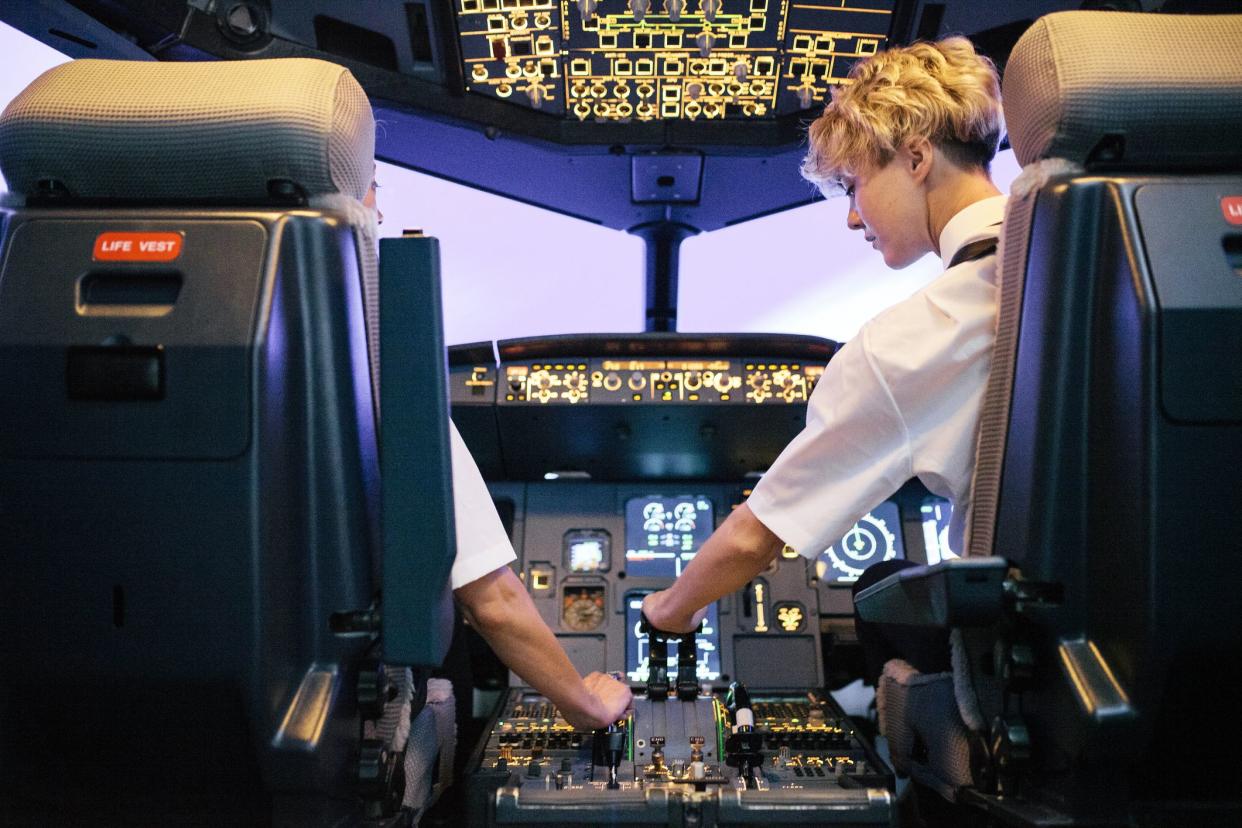
Kids used to get cockpit tours all the time. But in 2001, for all the right reasons, the Aviation and Transportation Security Act ordered airlines to "fortify cockpit doors to deny access from the cabin to the pilots in the cockpit." Kids might get a tour today while the plane is on the ground, but it's a long shot.
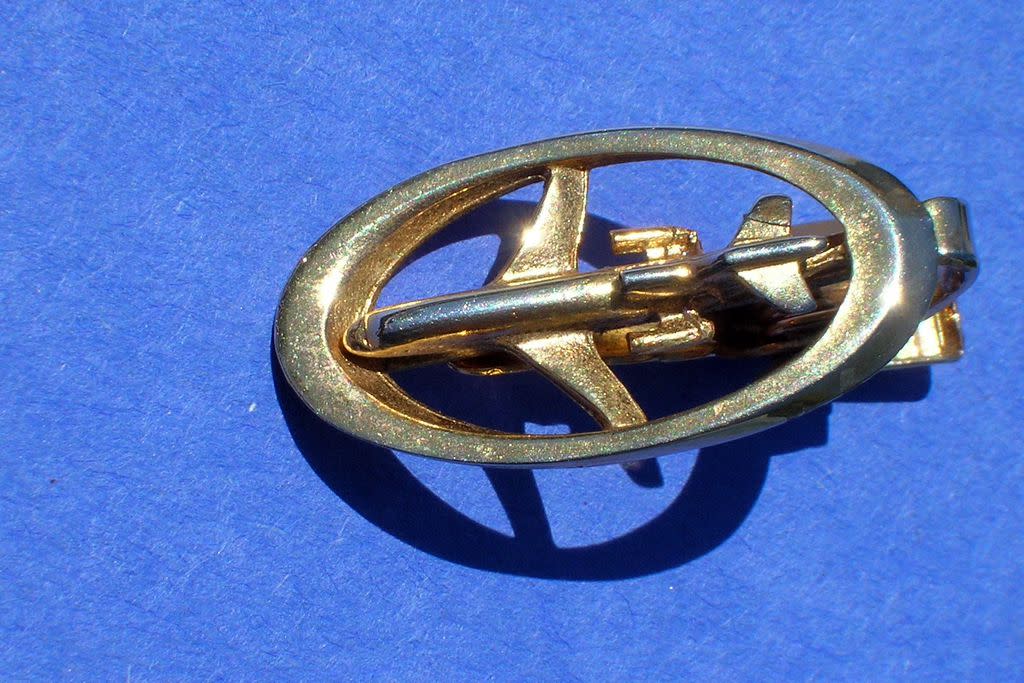
Airlines used to give wing pins to children all the time, but it's now difficult to get them without a specific request. In fact, until 2016 when they brought them back, American Airlines had ceased the practice entirely. Several airlines still don't give them away.
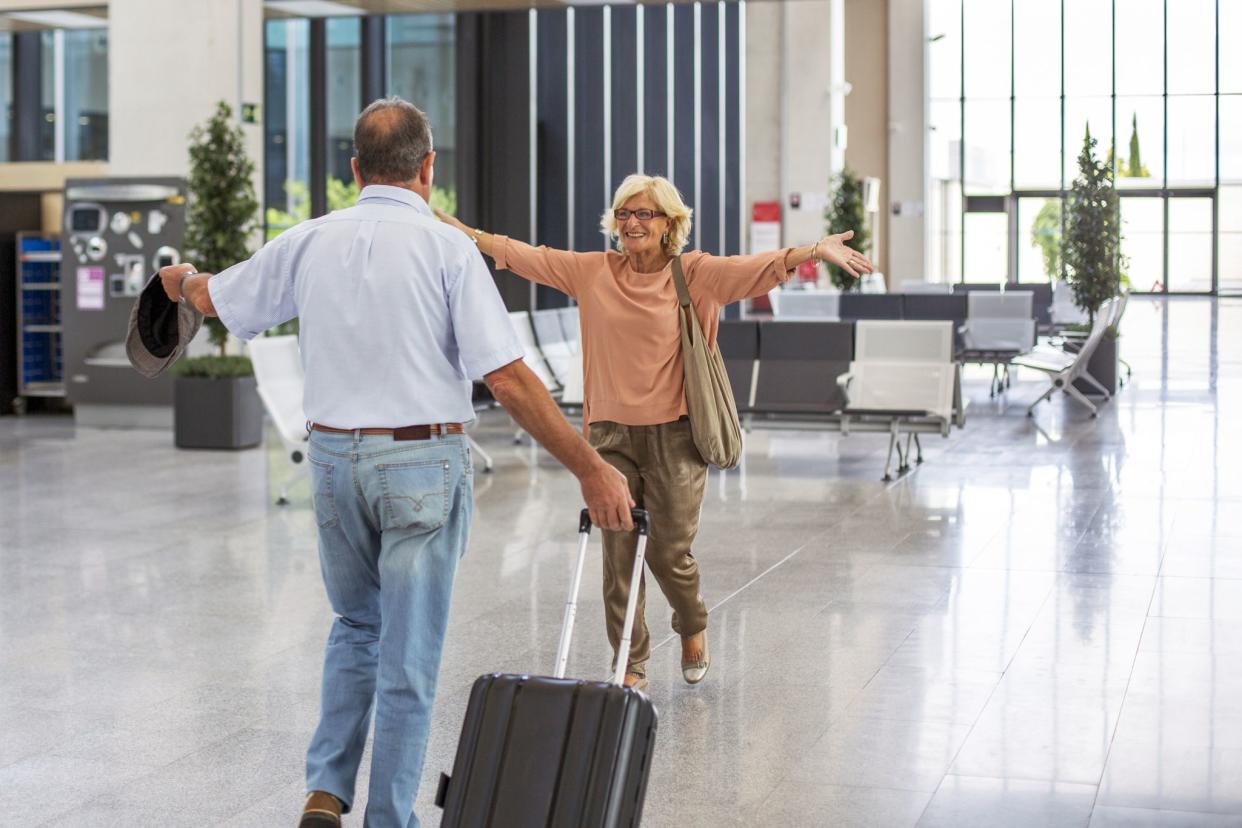
At one point, you could get to the gate without any ID at all. Your family could either drop you off right at your plane or pick you up. Naturally, this all changed after the terrorist attacks in 2001.
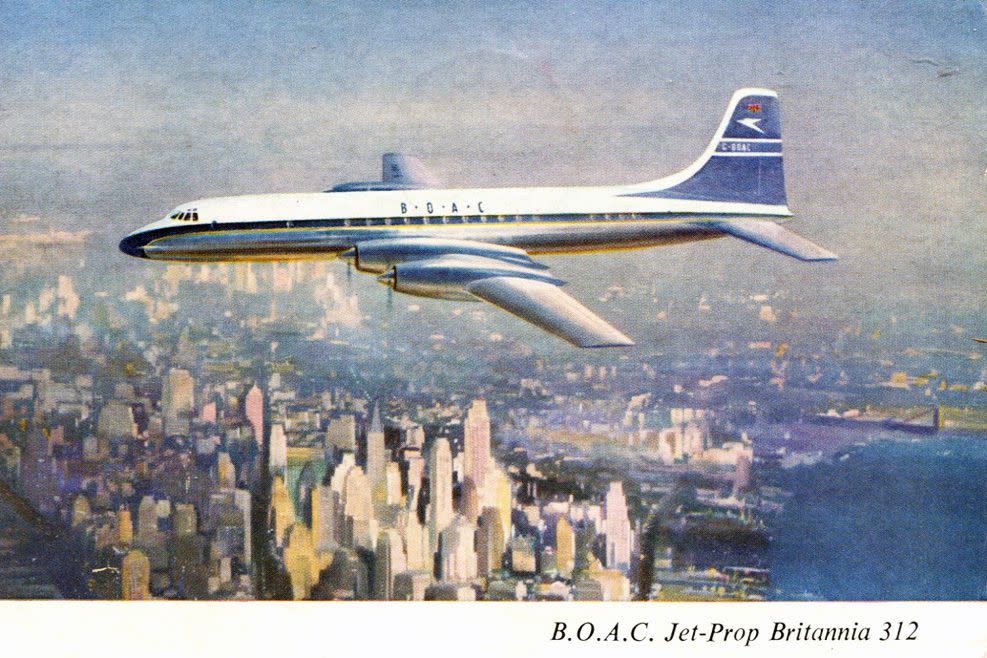
Not postcards of your destination, but of the flight itself, with a picture of the plane or the meal you were going to be served. In the 1950s, you wrote to people on the ground about the flight — basically the first text you now send after the “fasten seatbelt sign” turns off when the plane lands, but this one wouldn't arrive until days later.
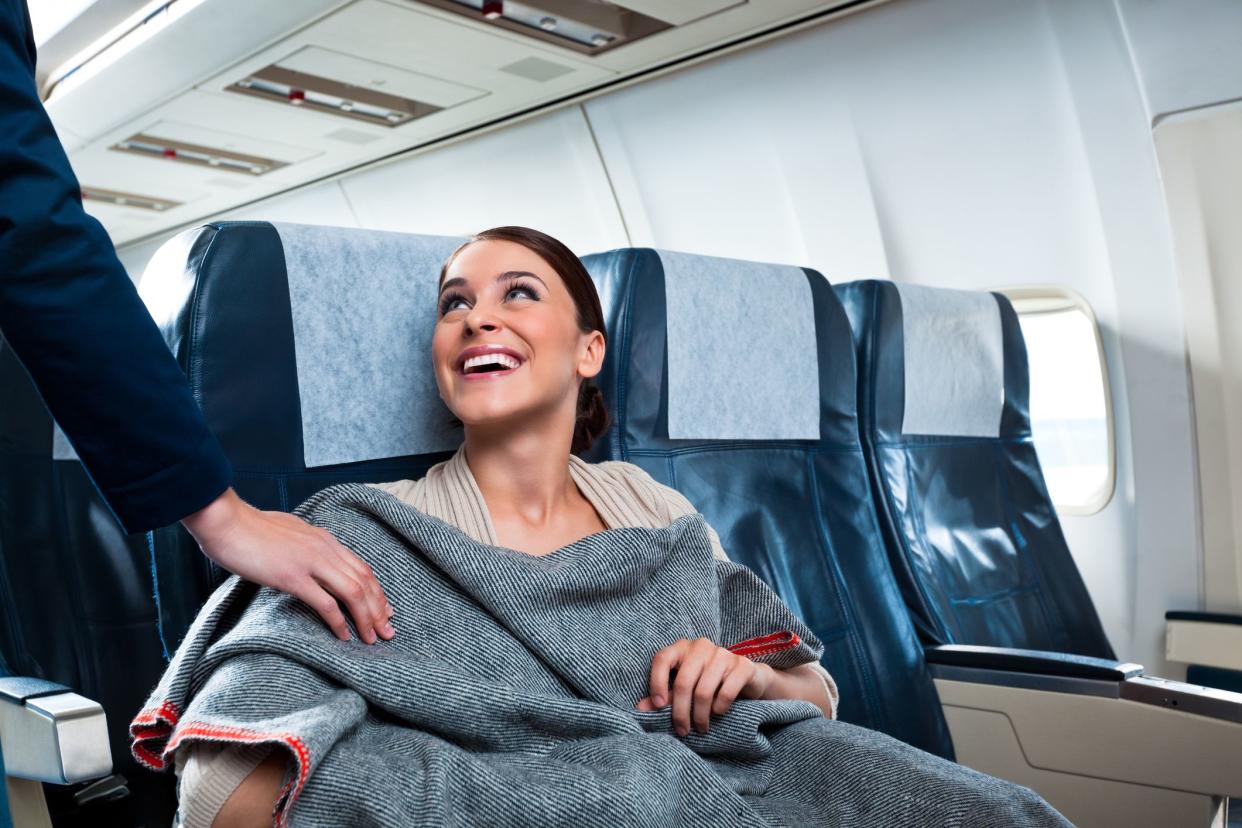
Though some carriers still give free blankets to customers, it's a perk that's disappearing quickly. Germaphobes don't like the idea of reusing unwashed blankets, while folks who get them for free in first class are stealing so many that the perk may disappear entirely.
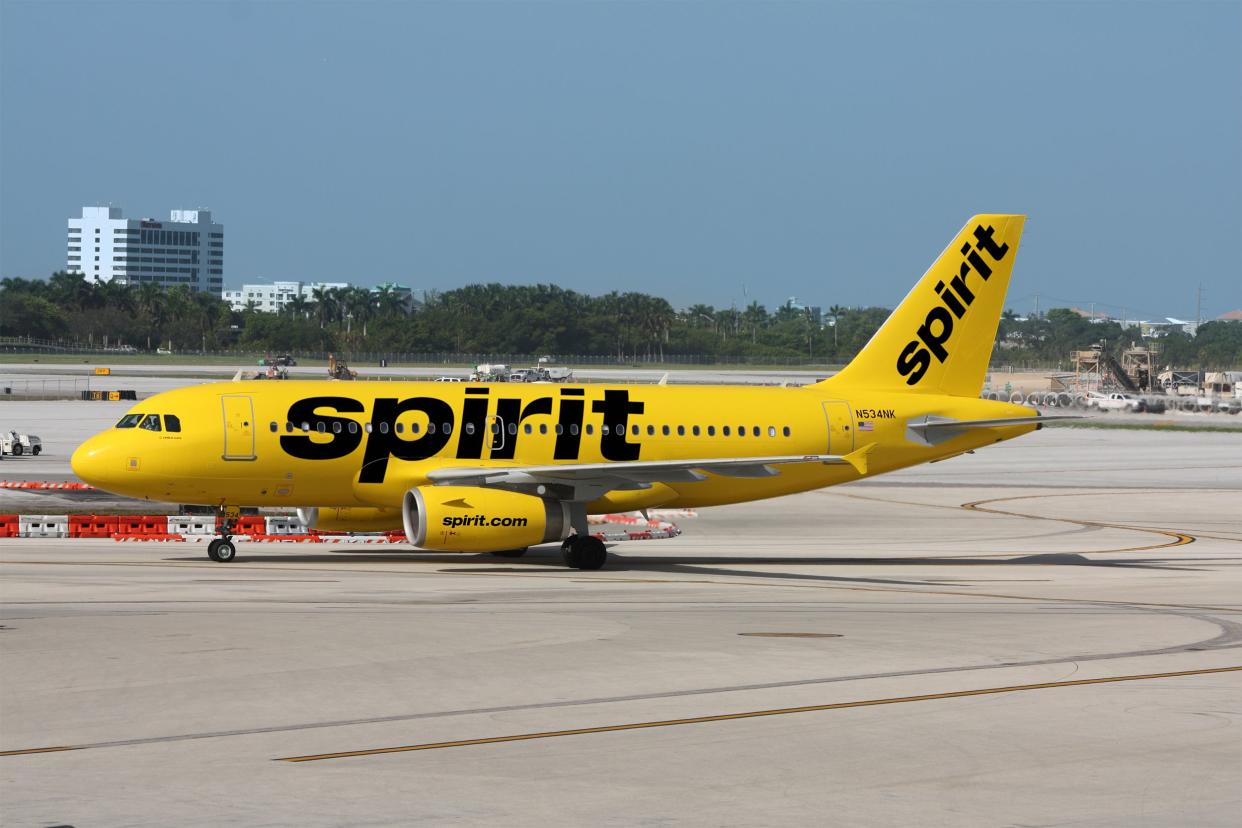
Drinking water should be as much a “perk” in planes as it is in prisons, but for some airlines it's a corner worth cutting. Spirit Airlines charges $3 for a bottle of water — you might get a cup of it only grudgingly. When travel tips for your airline include bringing a water bottle, that’s no-frills.
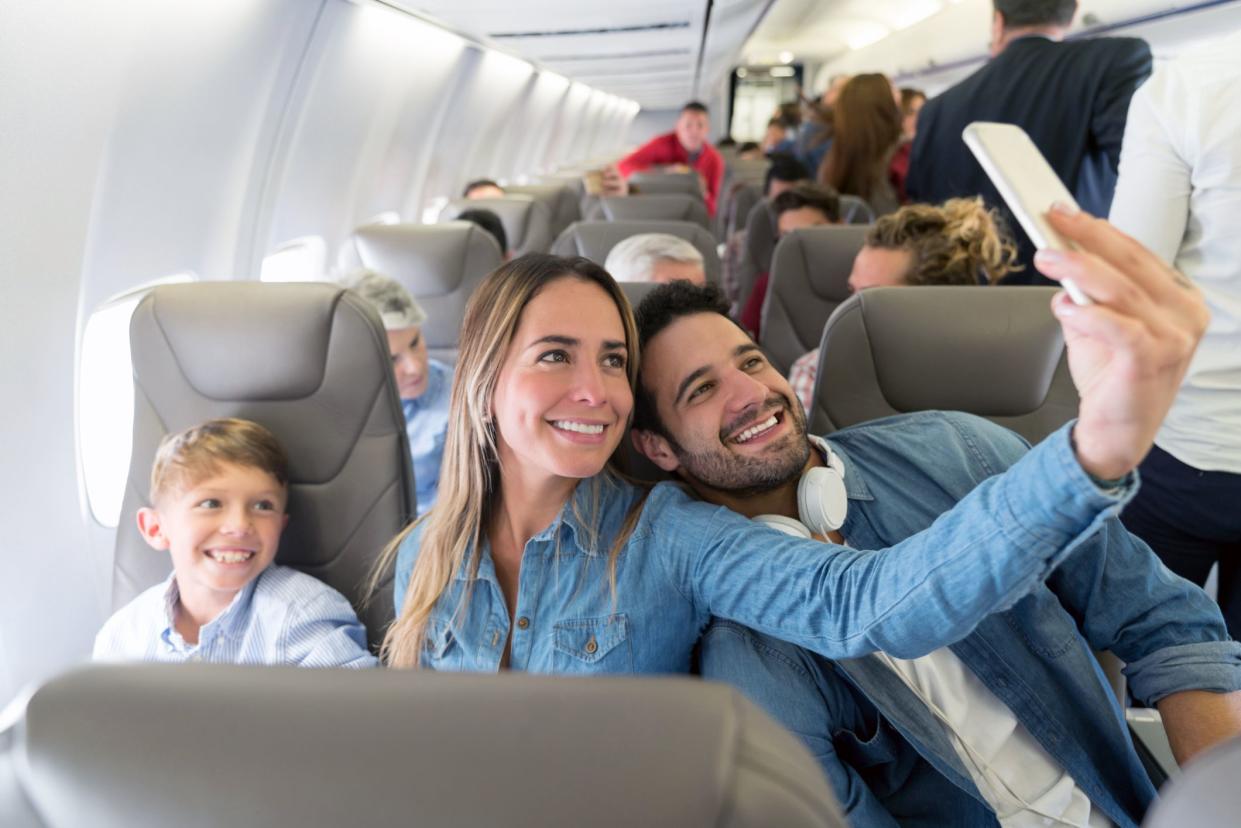
Don't blame Southwest Airlines' “cattle call” boarding system: It isn't all that difficult to get seats together on those flights. But since 2011, American, Delta Air Lines, Frontier Airlines, and United Airlines increased the number of coach seats that require an extra fee. In many cases, that means paying an extra $25 to $50 for adjacent seats.
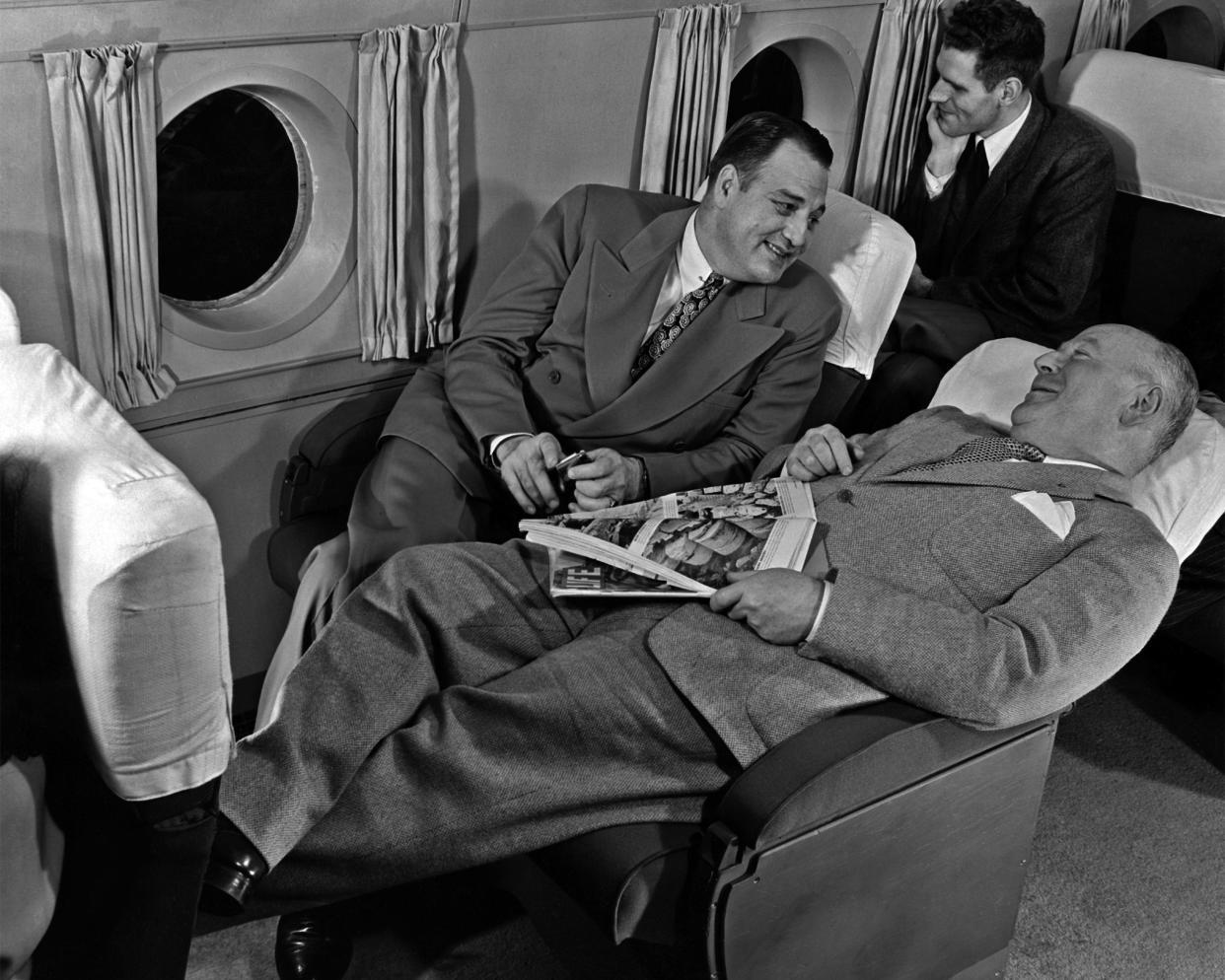
Coach seats once had 3 to 6 inches more legroom. In the 1950s, economy class looked more like business class does now, and first class was basically a small hotel suite. You were paying enough for these flights at the time that it was the least the airlines could do.
Related: 20 Ways the Airline Industry Needs to Improve
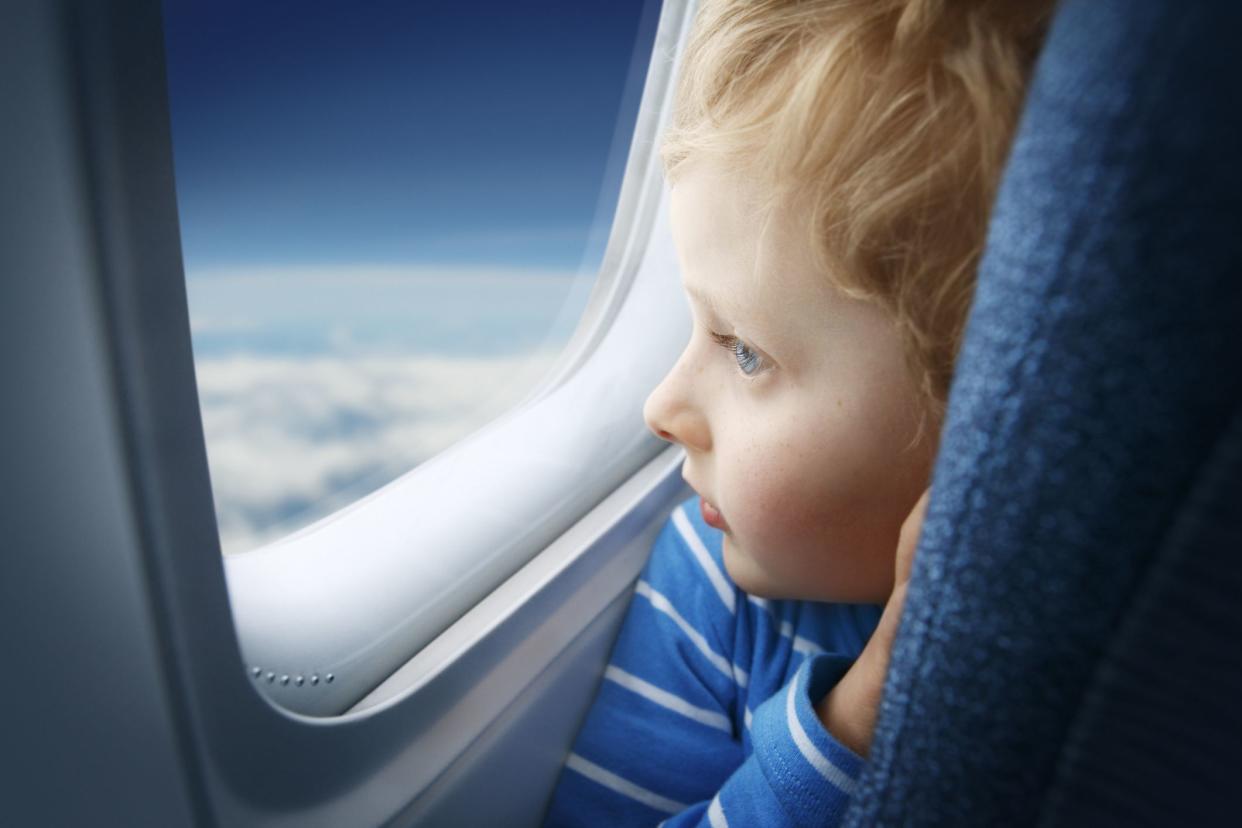
The average seat pitch, or amount of legroom, in economy or coach class used to be about 35 inches. It's since shrunk closer to 31, even as U.S. passengers get larger. But airplane windows are designed to maintain the structural integrity of the aircraft — and with a particular seat pitch in mind. If an airline wants to add rows and shrink legroom, the windows won't line up, and you can actually wind up in a “window seat” between windows.
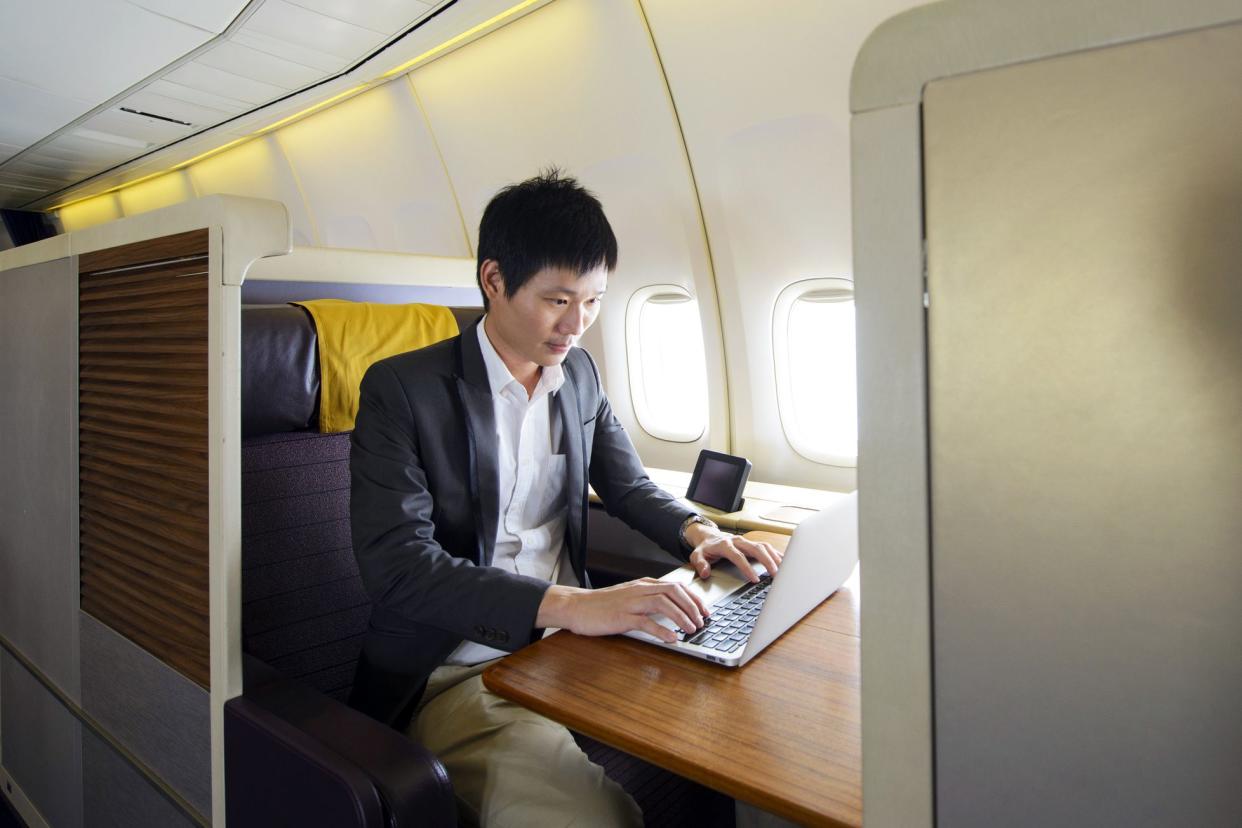
International carriers are starting to see first-class suites in general as a waste, especially when they can fit more passengers into similarly comfortable business-class seats. Even long-haul flights are getting the business-class pod treatment over a bulky first class.
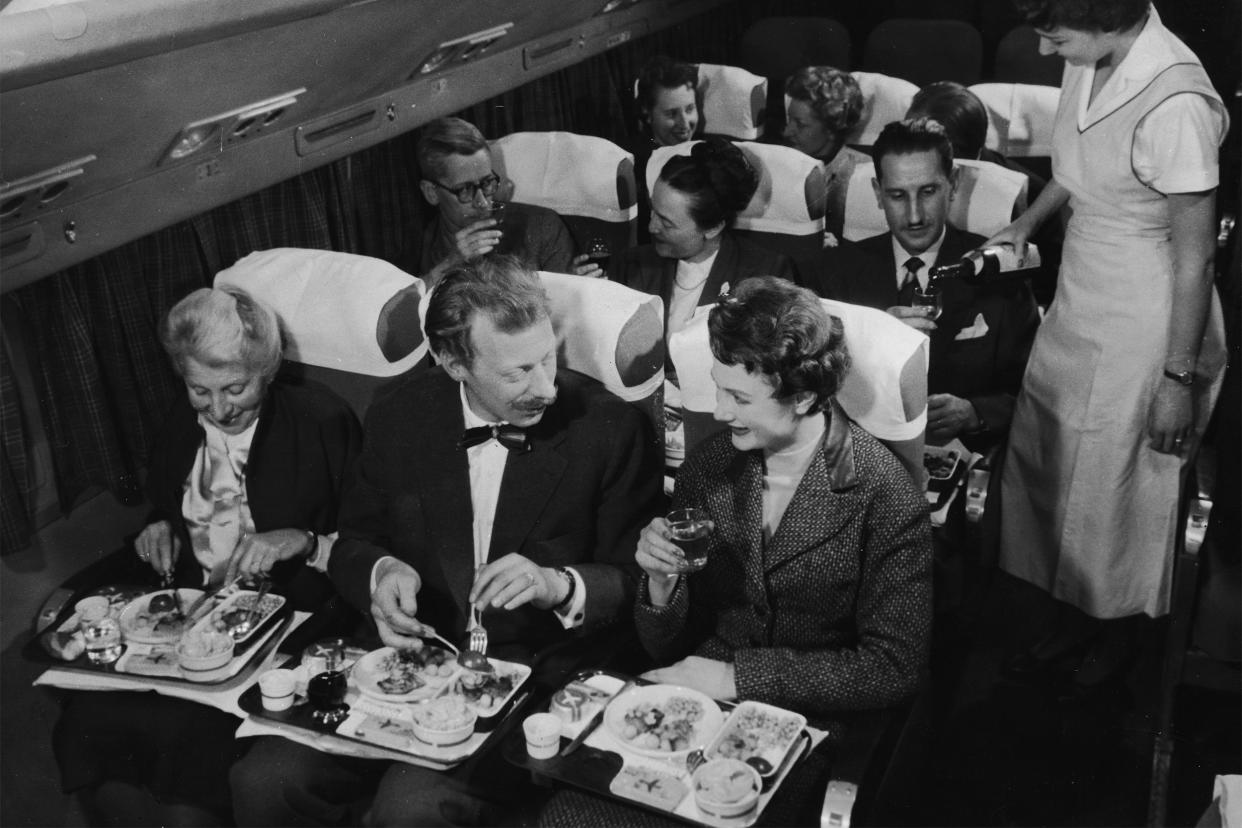
People didn't just put on suit coats and dresses for flights in the 1950s and '60s: George Hobica, who worked as an executive for Eastern Airlines in the 1980s and now runs Airfarewatchdog, told Conde Nast Traveler he once showed up for a flight in a sport coat but without a tie, only to be turned away. Staff usually got first-class seats; he had to beg for economy. If you flew first-class, you were expected to look the part.
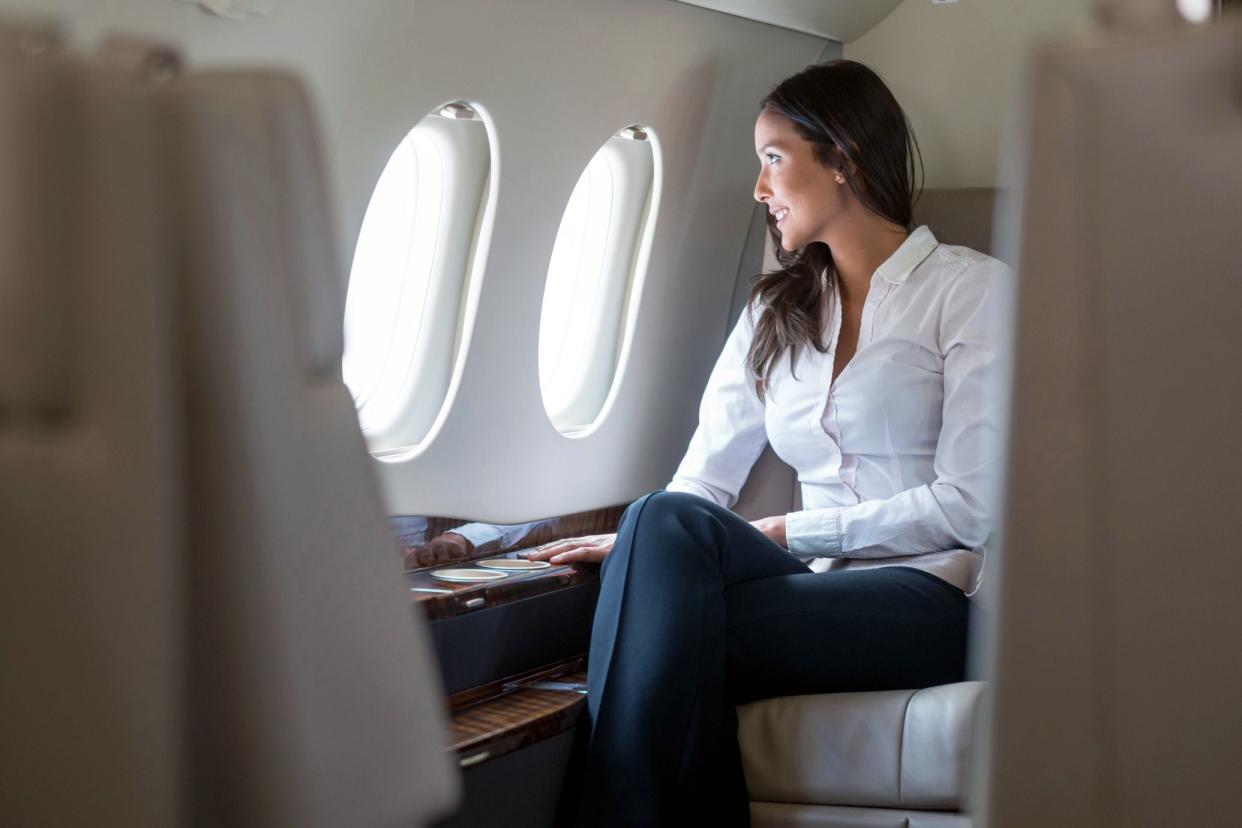
At one point, you could join an airline rewards program and be assured at least one bump to first class. But as airlines have raised the bar for the number of miles necessary for frequent flyers to get this perk, it's become far more elusive.
Related: You Won't Believe What These Rewards-Savvy Travelers Got for Free
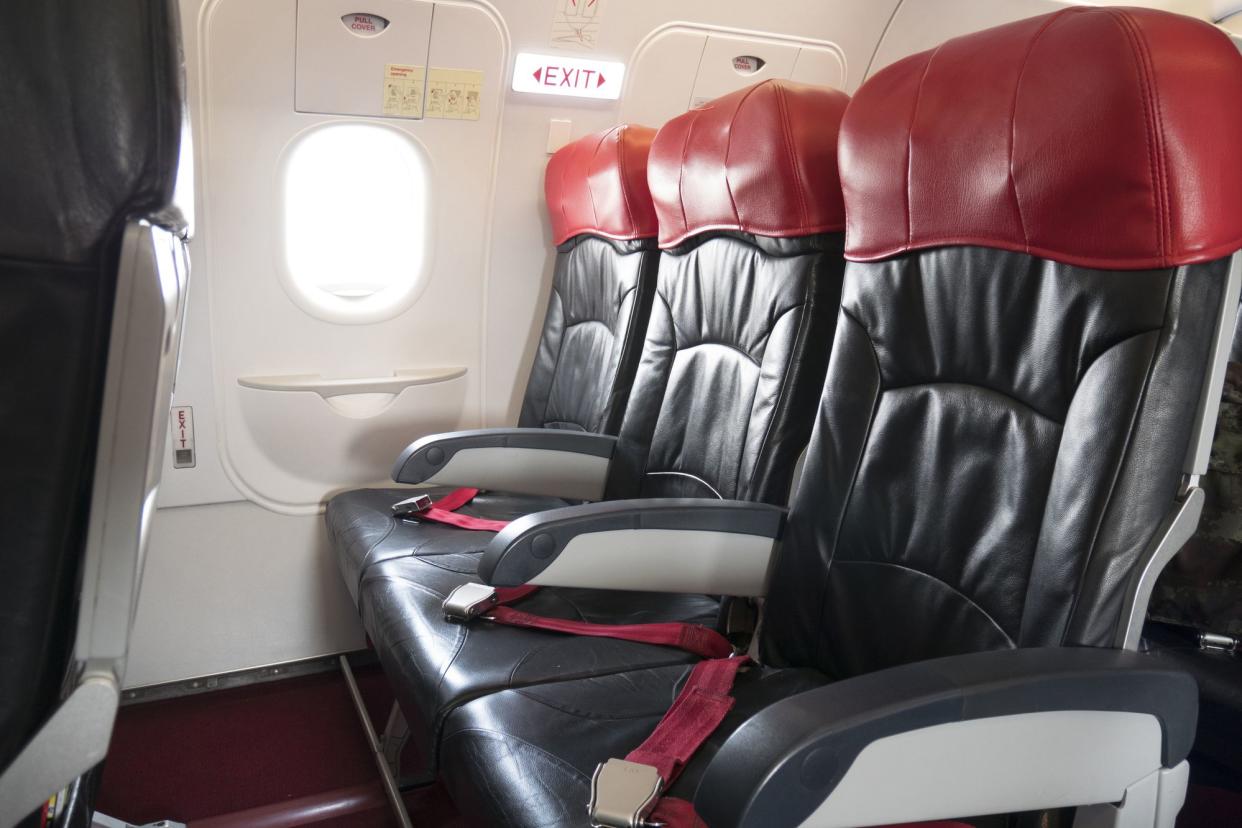
How else were airline employees flying first class and airlines ripping out seats for lounges? “Back then, flights were 50% empty. There was always a middle seat empty, the rows were spaced farther apart, and it was a much better experience,” Hobica said. Today, room to spread out is more rare, as U.S. flights have “load factor” upward of 80% capacity. Earlier in the pandemic, airlines were blocking middle seats, but that has since ceased.
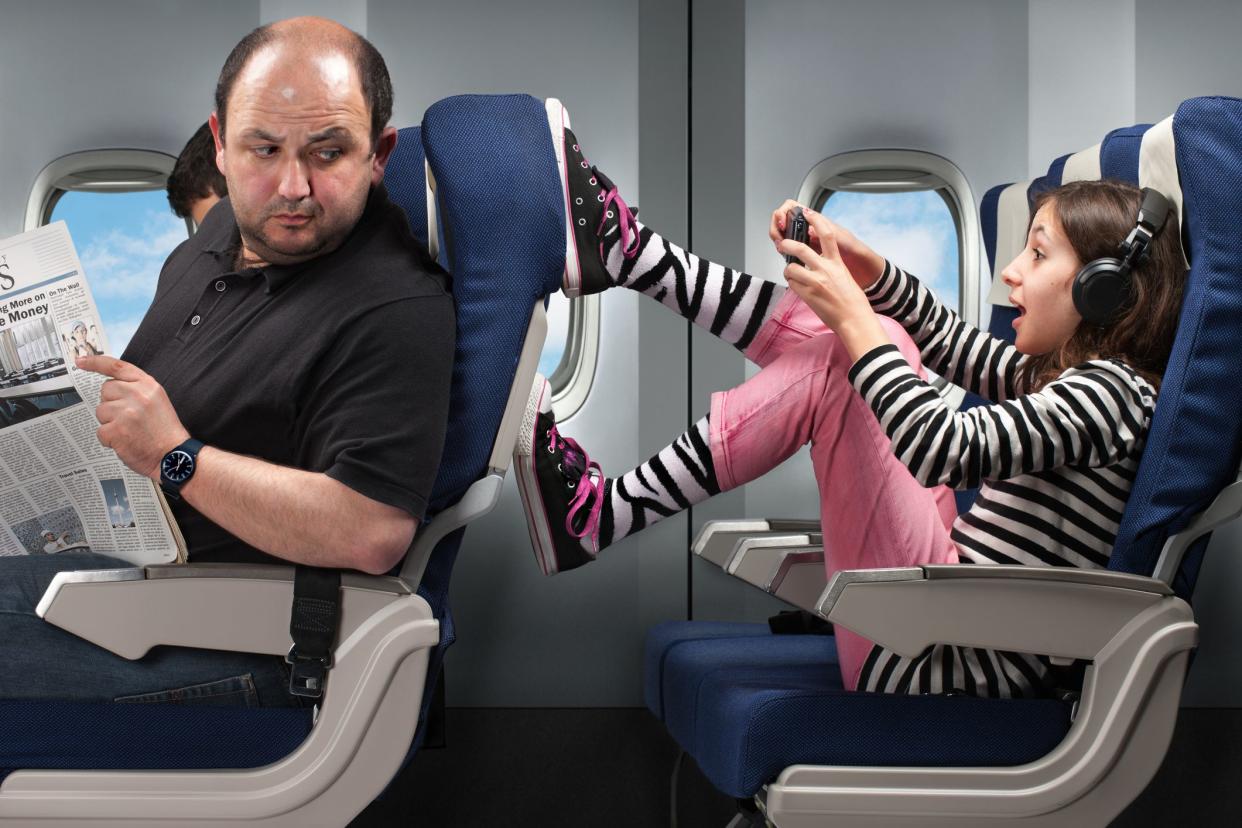
Incivility has been on the march for a while now, and air travel has not been spared. Hardly a week goes by without news reports of outrageous behavior by air travelers or flight crews. One week a passenger is punching a flight attendant, and another week a doctor is violently dragged off a plane to make room for crew on an overbooked United flight. It's enough to make a person want to drive instead.